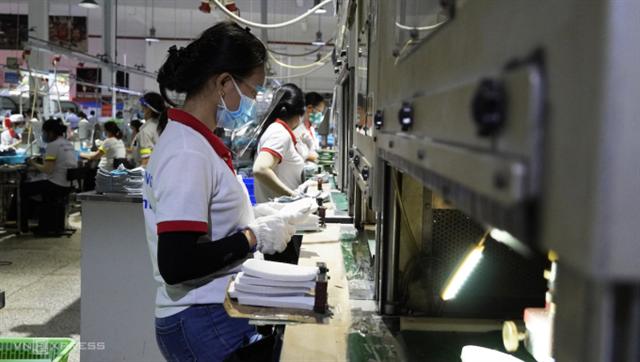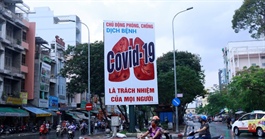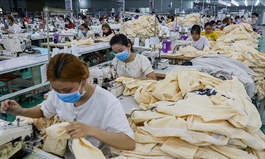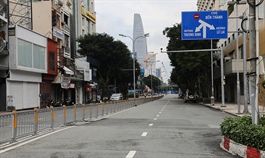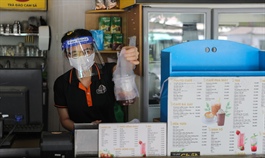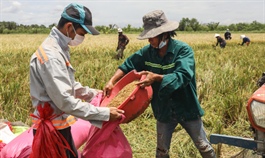Strategies for safe resumption by businesses
Strategies for safe resumption by businesses
Since living with Covid-19 seems inevitable, businesses want the government to be rational about safety requirements.
Workers at Chin Luh Shoe Co., Ltd in southern Long An Province, July 2021. Photo by VnExpress/ Hoang Nam |
Since mid-September Quang, who owns a wood business in southern Binh Duong Province, has been preparing to resume production on Oct. 1 after more than a month of closure due to the pandemic.
But to reopen, businesses must meet Covid safety conditions that are still to be announced by the Ministry of Health.
Many other wood production enterprises in Dong Nai and Binh Duong are also keen to reopen but are concerned about the safety guidelines.
Industry trade groups have said the regulations should spell out the travel and other rights for fully vaccinated people and those who have recovered from Covid, pointing out the vaccination would only then be meaningful.
The policy of "living with" Covid should be simple and not involve red tape, they said.
The guidelines should be easy to apply and have legal status so that businesses could strategize without having to seek further permissions from provincial authorities, they said.
Local authorities should help businesses adapt and not create unnecessary hurdles, they said.
The Vietnam Logistics Business Association said a reputable third party should be authorized to help businesses adopt safety regulations to help ease the burden on authorities.
The draft guidelines by the Ministry of Health allow businesses to organize testing for their employees. At least 20 percent of high-risk workers and partners such as raw materials providers need to be tested periodically. Employees who are fully vaccinated or have recovered from Covid are exempt.
Businesses in yellow zones, or medium Covid risk areas, need to organize tests every second week while those in orange and red zones, high and very high risk areas, need to test every week.
The trade groups have urged authorities to reduce the testing rate for high-risk workers from 20 percent to 10 percent to reduce costs and improve workers’ morale.
Periodic testing should not be required for some high-risk people such as motorcycle taxi drivers and delivery workers since most of them have been vaccinated, they said.
Testing should only be required in high-risk locations with frequent human contact such as ports, airports, logistics centers, goods distribution centers, and headquarters of state agencies, they said.
Many associations said businesses should be allowed to treat their workers for Covid, only seeking support from authorities for severe cases.


